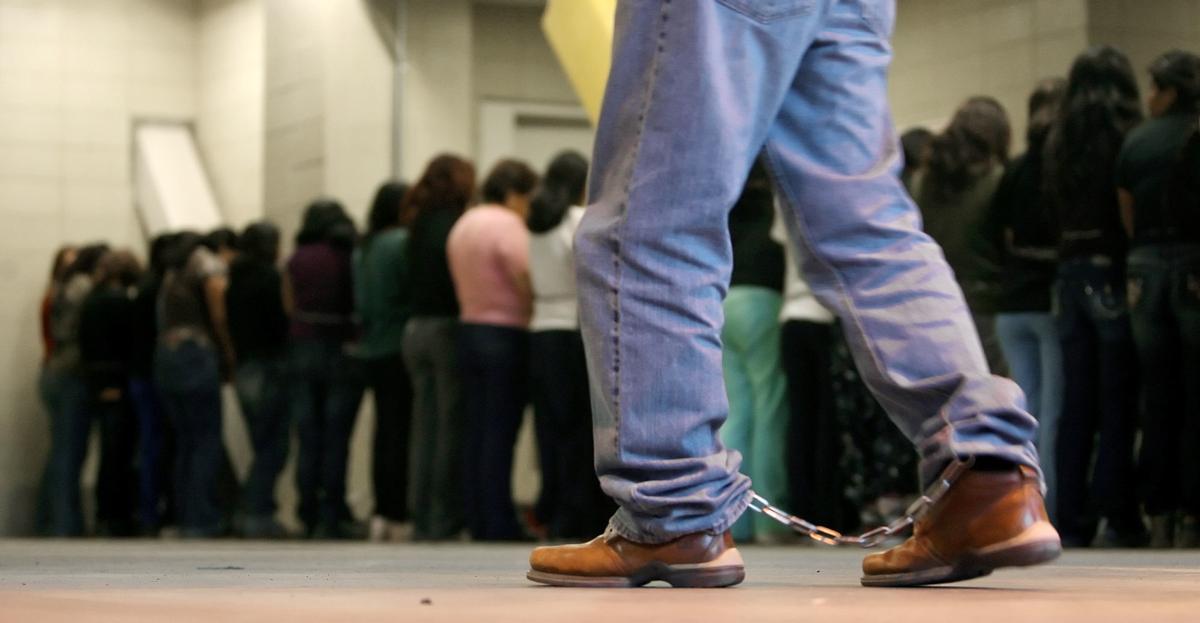Federal judges in Tucson are divided on how to interpret a recent U.S. Supreme Court decision that put numerous criminal border-crossing cases in jeopardy.
One judge dismissed a felony border-crossing charge in December, citing the faulty legal paperwork addressed by the Supreme Court justices. But in at least two other cases, judges agreed with strenuous objections from prosecutors that the Supreme Court decision did not apply, U.S. District Court records show.
The focus of the Supreme Court decision was a document used in civil immigration court called a notice to appear. Typically, when a person is accused of being in the country illegally, they are issued a notice to appear before an immigration judge. If they are deported and then cross the border illegally to get back to the United States, they may face criminal charges.
The problem is that in recent years virtually all notices to appear lacked a date and time for the person to show up at immigration court, according to the Supreme Court case known as Pereira v. Sessions. In their June decision, the justices cast doubt on the legality of deportation proceedings that started with faulty notices to appear.
The Supreme Court decision “certainly has wide ramifications” at Tucson’s federal court, but it remains to be seen how many criminal border-crossing cases will be affected, said Eric Rau, a supervisor at the Federal Public Defender’s Office.
Disputes over the interpretation of the Supreme Court decision are playing out across the country and likely will lead back to the Supreme Court for clarification, Rau said.
Soon after the Supreme Court decision, defense lawyers in Tucson started asking judges to dismiss criminal border-crossing charges. They argued that a person couldn’t illegally re-enter the United States if their previous deportation was invalid.
Those arguments persuaded Judge Rosemary Marquez to dismiss the indictment against Eder Erazo Diaz, a 27-year-old man from Honduras who was charged with illegal re-entry, on Dec. 4.
The same day, federal prosecutor Michael LoGalbo said he would appeal Marquez’s ruling to the 9th U.S. Circuit Court of Appeals, court records show. Also the same day, Erazo was charged with eluding inspection by immigration officers, based on the same incident as the previous charge.
The timing of the new charge was “strongly suggestive of vindictive prosecution,” Assistant Federal Public Defender Michael Areinoff wrote in a Dec. 10 emergency motion to dismiss the new charge.
Areinoff said filing the new charge indicated prosecutors were trying to “put the matter in front of new judges who might not have already ruled against the government.”
In a short, but colorful, order filed the next day, Magistrate Judge Bernardo P. Velasco dismissed the new charge against Erazo.
Velasco recounted a case from his days as a lawyer when a judge dismissed marijuana-smuggling charges against a border crosser. The prosecutor immediately filed an illegal re-entry charge.
The defense alleged vindictive prosecution, spurring the judge at the time to ask the prosecutor if he knew how to play cards. The prosecutor said he did and the judge told him: “Then you know better than to string your bets” and dismissed the complaint.
In another recent case, Magistrate Judge Jacqueline Rateau said the notice to appear issued to Ismael Morales Hernandez, a Mexican citizen charged in February with illegal re-entry, was invalid. She recommended Judge Raner C. Collins dismiss the indictment, citing the Supreme Court decision and a ruling in a similar case by a federal judge in eastern Washington.
But Collins disagreed with Rateau, noting Morales was able to attend immigration court proceedings.
“The fact that the initial notice did not include the date, time, and place is of no moment,” Collins wrote. “The defendant exercised his right to due process and fully participated and therefore cannot claim that because the initial notice was deficient the Immigration Court lacked jurisdiction.”
The Federal Public Defender’s Office in Tucson filed a notice of appeal in Morales’ case to the 9th U.S. Circuit Court of Appeals Dec. 20.





